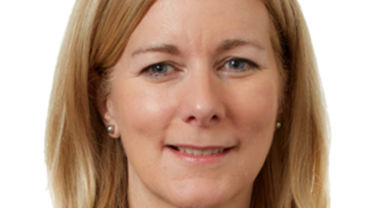Thomson Reuters’ Transforming Women’s Leadership in the Law programme held its inaugural conference earlier this month, and brought together over 100 legal professionals from law firms, corporations and professional bodies such as the Bar and The Law Society. The speakers and delegates were keen on sharing insights and their own experience of diversity initiatives, and to discuss the many challenges ahead.
One of the break-out sessions was aptly named ‘Making it happen: Bringing diversity, inclusion and intersectionality to the forefront of your business strategy’, as it reflected the ethos of the conference which was to be practical and a catalyst for change.
The panel consisted of representatives from a variety of segments in the legal industry, including Natalia Nicolaidis, General Counsel at Credit Suisse; Tom Cosgrove, Barrister at Cornerstone Barristers; Wayne Spillett, Head of Legal at Vodafone; Amanda Brock, Head of Legal Operations at Aviva and Helen Randall, Partner at Trowers and Hamlins. Each speaker had their own interesting stories to tell about the programmes and initiatives that their organisations have put in place and what inspired their unique approaches to tackling diversity.
The key take-away from the Bar was their honesty about the traditional view of the court and that judges are always male. This narrow kind of role model doesn’t inspire a wider younger generation to think that they could also pursue this career path. A glaring visual of this are the halls of the Royal Courts of Justice which are lined with paintings of white and male judges. To combat this uniformity, they are now taking steps to make existing female role models at the Bar more visible. This is a welcome step as we have some distance to go in improving the proportion of female to male judges in the UK.
Another approach that looks at the diversity issue from the ground up is targeting the recruitment process. This is about setting 50/50, male/female pipe-line targets for law firm graduate recruitment. Of course, this policy will not be enough to build a more diverse workforce if the hiring managers themselves don’t follow that up with giving everyone in that group of graduates the same career opportunities or promotions across the board due to inherent unconscious bias.
Looking at the longer-term career trajectory for women, we also heard about a programme that was targeted at returning mothers. It aims to reconnect them with their companies and help them rebuild their career after this prolonged break. Maternity and paternity leave were topics that kept cropping up throughout the day as a key challenge in eliminating inequality. This approach acknowledges the fact that when a woman returns from being away for months or years it is hard to jump back on the career ladder straight away. Though there is now marginally more men taking up paternity leave, this is still a relatively low amount due to lingering taboos.
A strategic but contentious approach is making these types of initiatives tied to company or personal targets and goals. Some firms already link their diversity targets to organisational objectives and offer individual performance rewards for meeting them. There are likely to be many reasons for the resistance to this approach. One reason, for example, could be that by doing this the organisation would need to spend time and effort making sure they are honest and transparent about how they treat everyone in the organisation, and offer their employees enough support to enable them to realistically tackle these issues.
It was inspiring to hear all the examples in this session, which reaffirmed the idea that it will take a wide range of initiatives, from grassroots to board level, to achieve equality in the workplace. The more strategic an initiative is in nature, therefore having official commitment from the top, the more likely they are to be successful.


